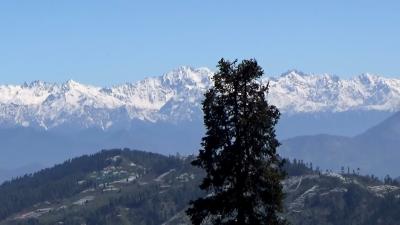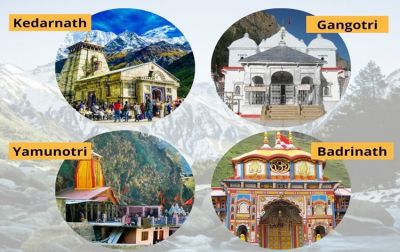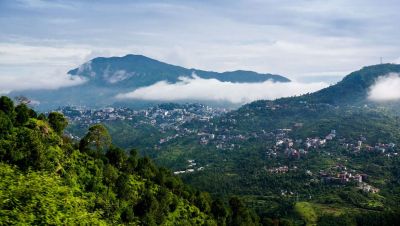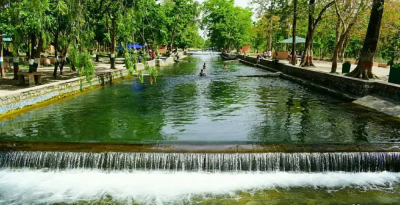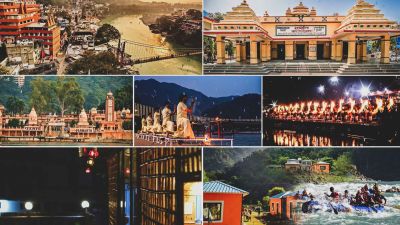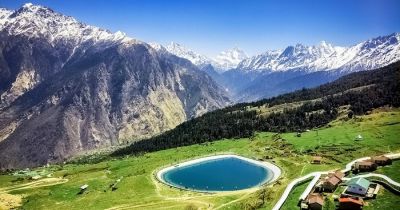Chronicling the Legacy of Raj Era Hill Stations in Uttarakhand
Raj-era hill stations in Uttarakhand, nestled amidst the picturesque Himalayan ranges, hold a rich historical legacy that offers a glimpse of the colonial past. These tranquil retreats served as summer capitals for the British during their rule in India and continue to enchant visitors with their colonial charm and natural beauty. In this blog post, we will delve into the fascinating history and highlights of some of the prominent hill stations from the Raj era in Uttarakhand.
1. Nainital
Nainital, perched at an altitude of 2,084 meters, is one of the most popular Raj-era hill stations in Uttarakhand. The town surrounds the enchanting Naini Lake, and its lush green hills provide a perfect backdrop. The British discovered this gem in 1841 and were captivated by its beauty. The town boasts several colonial-style buildings, such as the Nainital Governor's House and St. John's Church, which reflect the architectural grandeur of the Raj era.
While in Nainital, don't miss the opportunity to take a boat ride on the Naini Lake, visit the Nainital Zoo, or take a scenic cable car ride to the Snow View Point for breathtaking views of the Himalayas. The Mall Road offers a plethora of shops and eateries, where you can indulge in shopping for local handicrafts and relish delicious local cuisines.
2. Mussoorie
Situated at an elevation of 2,005 meters, Mussoorie is fondly known as the "Queen of the Hills." This hill station was established by the British in 1827 and served as a popular summer retreat. Mussoorie is adorned with colonial architecture, including the famous Lal Tibba viewpoint and the Landour Clock Tower.
The Mall Road in Mussoorie is a bustling promenade lined with shops selling local handicrafts, woolen garments, and souvenirs. Take a leisurely walk along the Mall Road and visit the popular Kempty Falls, Gun Hill, and Company Bagh. The Cloud's End, a scenic spot at the western end of Mussoorie, offers panoramic views of the Aglar River Valley.
3. Ranikhet
Ranikhet, meaning "Queen's Meadow," is a serene hill station located in the Almora district of Uttarakhand. This hill station was established in the 1860s as a summer retreat for the British. The town is known for its colonial bungalows and military cantonment. The charming St. Bridget's Church and the Jhula Devi Temple are must-visit attractions in Ranikhet.
Ranikhet is ensconced amidst lush green meadows, dense forests, and snow-capped peaks. The golf course in Ranikhet, surrounded by tall pines and deodar trees, offers a unique golfing experience. Chaubatia Garden, known for its apple orchards and panoramic views, is another popular spot in Ranikhet.
4. Almora
Almora, the cultural heart of Kumaon region, is a captivating hill station known for its medieval temples and colonial architecture. Established in the 16th century, Almora still boasts several old wooden homes and buildings from the Raj era. The vibrant streets of Almora are lined with shops selling traditional handicrafts, including intricately designed copperware and woollen garments.
The Kasar Devi Temple and the Nanda Devi Temple are significant religious sites in Almora. For panoramic views of the Himalayas, you can visit the Bright End Corner or the Zero Point. The Binsar Wildlife Sanctuary, located near Almora, is home to various species of flora and fauna and offers breathtaking trekking trails.
5. Lansdowne
Lansdowne, named after Lord Lansdowne, the then Viceroy of India, is a quiet and serene hill station situated at an altitude of 1,706 meters. This hill station was established as a cantonment town by the British in 1887 and still preserves its colonial charm. The War Memorial and the Regimental Museum in Lansdowne showcase the rich military history of the area.
Lansdowne is surrounded by thick oak and pine forests, making it an ideal destination for nature lovers. The Bhulla Lake and the Tip N Top viewpoint are popular attractions in Lansdowne. You can also visit the Tarkeshwar Mahadev Temple, dedicated to Lord Shiva, and enjoy the peaceful surroundings.
In conclusion
The legacy of Raj-era hill stations in Uttarakhand is a treasure trove of history, natural beauty, and architectural marvels. These hill stations provide an opportunity to experience the splendor of the British Raj while immersing oneself in the pristine beauty of the Himalayas. Whether you are a history enthusiast, a nature lover, or simply seeking a retreat from the bustling city life, a visit to the Raj-era hill stations in Uttarakhand is sure to leave you captivated and rejuvenated.
Remember to capture the memories, indulge in local delicacies, and cherish every moment of your journey. And don't forget to share this blog post with your fellow travel enthusiasts, so they too can embark on a journey to chronicle the legacy of Raj-era hill stations in Uttarakhand.
Disclaimer : The information provided in this blog is for general informational purposes only. While we strive to keep the content accurate and updated, TravelSetu assumes no liability for errors or omissions. If you believe any part of this blog infringes your rights or causes concern, please notify us immediately at info[at]travelsetu[dot]com so that appropriate action can be taken.
